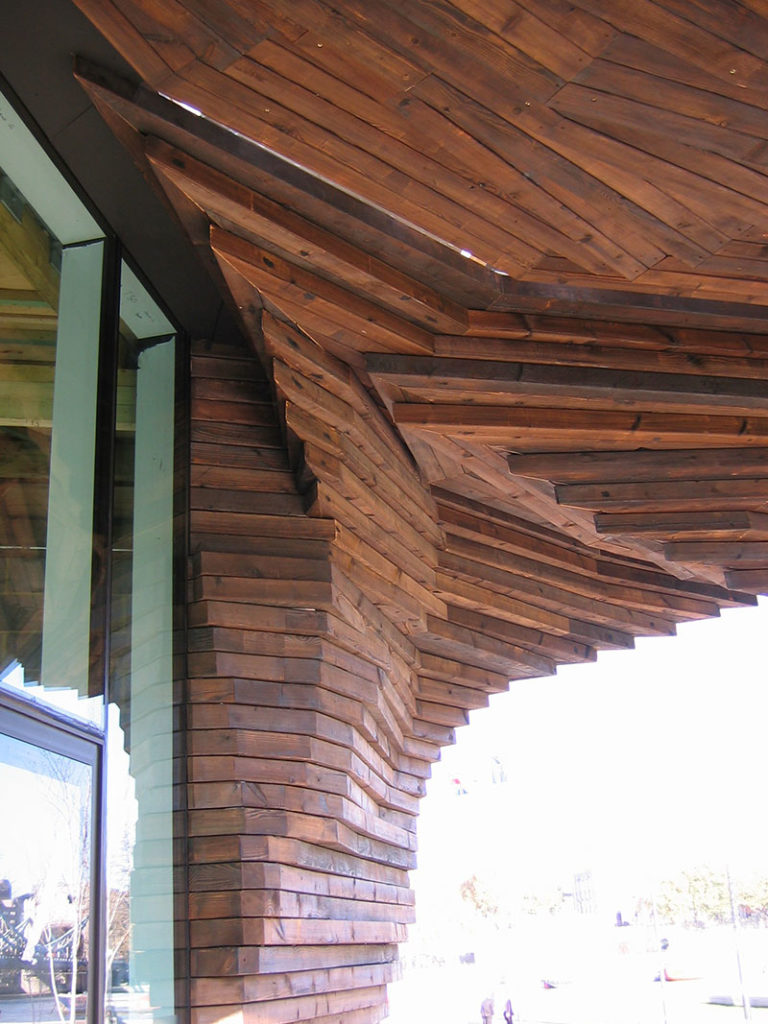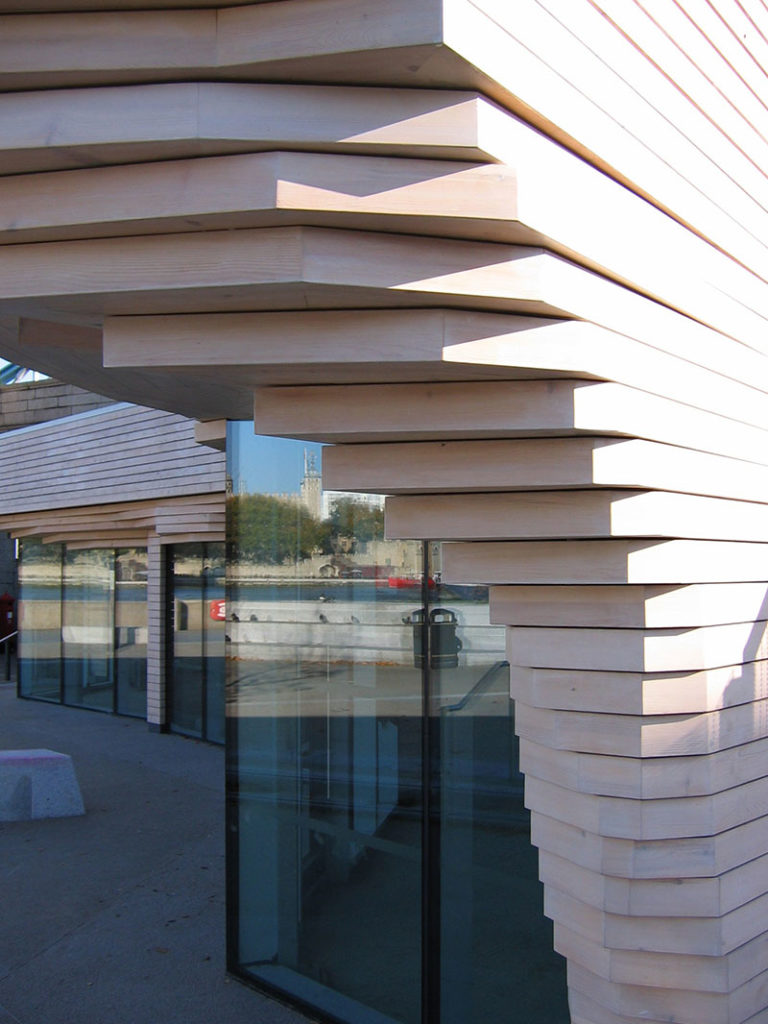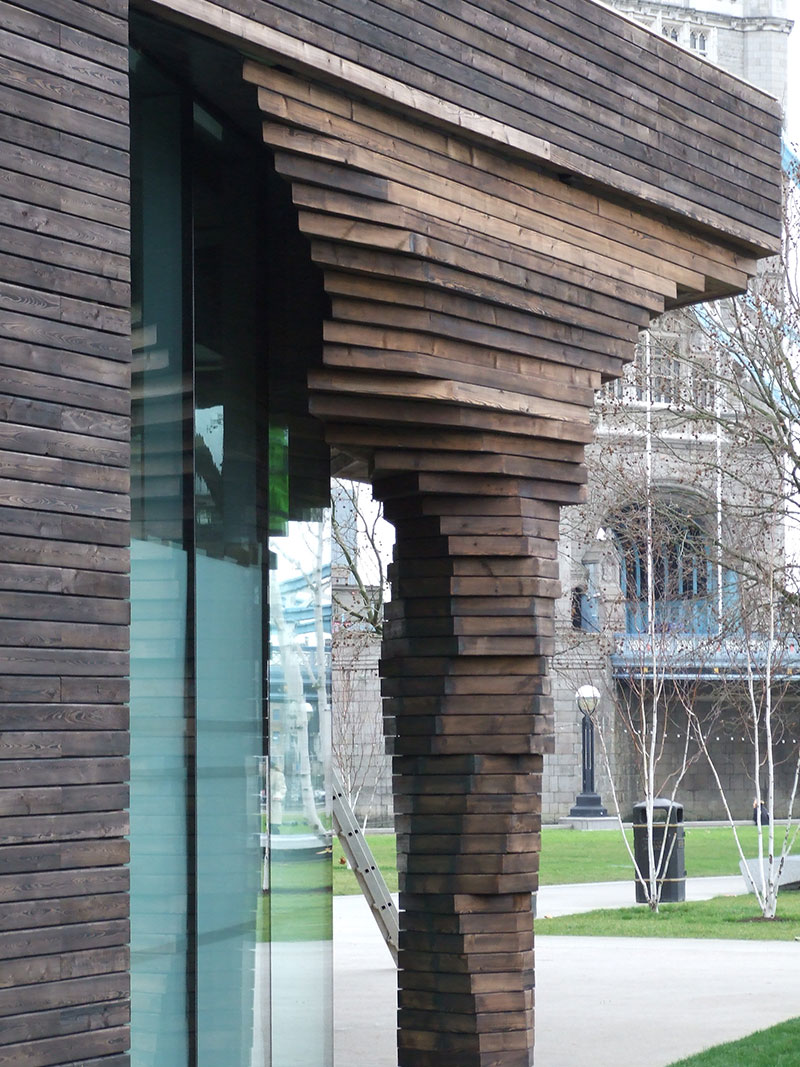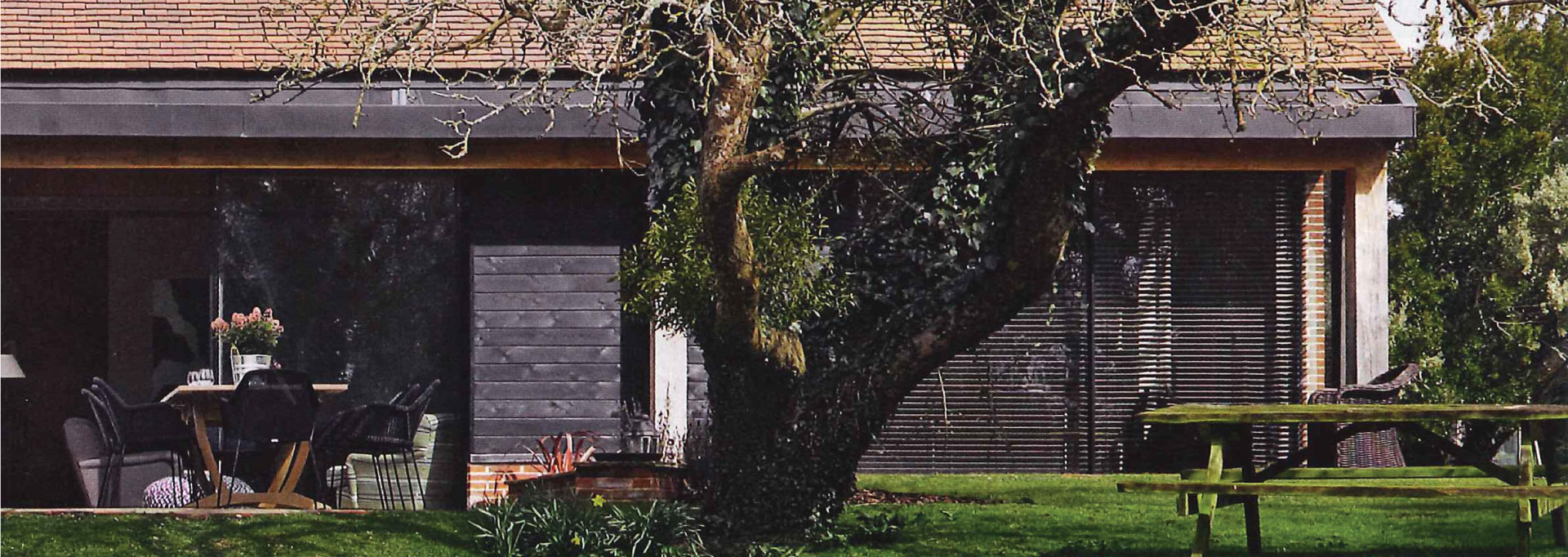Burnt Timber in Architecture
Interior and exterior cladding
History
Shou sugi ban — a fascinating technique that could be the secret handshake of wood preservation! Shou sugi ban, also known as yakisugi, hails from the land of cherry blossoms and samurai: Japan. Imagine a time-traveling carpenter from the 18th century, clad in a kimono, expertly wielding fire and wood. That’s the vibe we’re going for here.
So, what is shou sugi ban? Well, it’s all about turning wood into something both beautiful and resilient.

Meaning Behind the Name:
“Yakisugi” translates to “charred cedar or cypress”, while “shou sugi ban” is all about those “charred cedar/cypress planks”. Cedar and cypress are the majestic ancients of the botanical world. Other wood types can join the party too, Larch having particularly favourable results.
Superpowers:
Shou sugi ban isn’t just a pretty face. It’s waterproof, weatherproof, rot-resistant, mold-resistant, fire-resistant (cue the slow-mo walk away from an explosion), and even keeps termites and other creepy crawlies at bay. Basically, it’s the Chuck Norris of wood treatments.
Aesthetic Delight:
The charred look isn’t just for show. It highlights the wood’s natural grain, creating texture that’s like a cozy sweater for your eyes. Plus, the intensity of the charring and the wood type play a duet, resulting in unique variations.
Fun Fact:
People have been fire-hardening wood for over 400,000 years. Even our ancient ancestors knew that a little controlled burn could toughen up their timber.
The Present Day
Shou sugi ban outdoors as siding for buildings (think sleek, charred facades) and indoors on walls and furniture.
Charred timber Advantages:
Lazy Maintenance (In a Good Way):
Once shou sugi ban-treated, your wood won’t be a diva. No need for extra sealants or constant pampering. It’s the low-maintenance friend who still looks fabulous at brunch. Compared to other finishes, you won’t be refinishing this wood as often. More time for tea and scones, less time with sandpaper.
Aesthetic Swagger:
Shou sugi ban doesn’t do “basic”. It gives your outdoor space a unique, modern look. The charred surface highlights the wood’s grain, creating texture that’s like a well-fitted suit—sharp and intriguing. Minimalist or maximalist, it plays well with all design sensibilities. Plus, you can let it age gracefully (like a fine wine) or oil it up to maintain that dark allure.
Eco-Friendly Vibes:
Mother Earth approves! Shou sugi ban is sustainable—no toxic chemicals involved. It’s like sipping a green smoothie while riding a bamboo bicycle. However, fair warning: burning wood does produce emissions and ashes, so it’s not entirely angelic.
Penny-Wise:
Sure, the initial investment might raise an eyebrow, but think long-term. Shou sugi ban saves you moolah because it’s not high-maintenance. Fewer refinishing sessions mean more savings for your next avocado toast binge.

Charred timber cladding in the Japanese Shou Sugi Ban style

Disadvantages (Because Even Cool Things Have Quirks):
Special Tools Required:
You’ll need a propane torch or burner to work that magic. Learning the technique isn’t as easy as mastering the art of folding fitted sheets. Safety goggles on, DIY warriors!
So there you have it:
Shou sugi ban, the charismatic rebel of wood treatments. It’s got swagger, durability, and a touch of eco-consciousness. Just remember, when you choose shou sugi ban, you’re not just decking out your home—you’re joining a woodsy secret society.
Applications
Charred timber cladding—the dark knight of architectural finishes! Let’s peel back the layers and explore its many uses.
Coastal Areas:
Saltwater, sea breezes, and sandy beaches—coastal environments can be harsh on building materials. But fear not! Charred timber cladding steps in like a seasoned beachcomber. Its fire-resistant, weather-resistant, and insect-repellent qualities make it a smart choice for seaside homes, beachfront restaurants, and surf shacks. Plus, that dark, smouldering look against the azure backdrop? Instant coastal chic.
Bars, Pubs, and Clubs:
Imagine stepping into a trendy speakeasy or a rustic pub. The walls—charred timber clad, of course—whisper secrets of bygone nights. The dim lighting dances on the textured surface, creating an ambiance that says, “Come in, have a drink, and let’s swap stories.” Charred timber cladding adds warmth, character, and a dash of intrigue to these social hubs.
Retail Fit-Outs:
Boutiques, concept stores, and high-end shops know the power of aesthetics. Charred timber cladding isn’t just a backdrop; it’s a statement. It frames displays, wraps around pillars, and beckons shoppers with its tactile allure. Whether you’re selling artisanal cheeses or designer sneakers, this cladding says, “Our style game is strong.”
Commercial Spaces:
Office buildings, corporate headquarters, and coworking spaces—they all want that “wow” factor. Charred timber cladding brings texture to sterile lobbies, adds depth to meeting rooms, and turns staircases into sculptural masterpieces. It’s like a tailored suit for your workspace—an elegant blend of form and function.
Internal Applications:
Surprise! Charred timber isn’t just an outdoor superstar. Inside, it moonlights as a wall covering. Picture a feature wall in a restaurant, a cozy nook in a coffee shop, or even a residential accent wall. It’s like inviting nature’s rugged charm indoors.
Cultural Significance:
Remember the ancient Japanese art of Shou Sugi Ban? Well, it’s not just about aesthetics; it’s a nod to tradition. Using charred timber connects us to centuries-old craftsmanship, where fire and wood danced together.
In summary, charred timber cladding isn’t just about protection; it’s about storytelling. It whispers tales of resilience, elegance, and charm. So, whether you’re building a coastal retreat, a trendy bar, or your dream home, consider letting the flames leave their mark.






